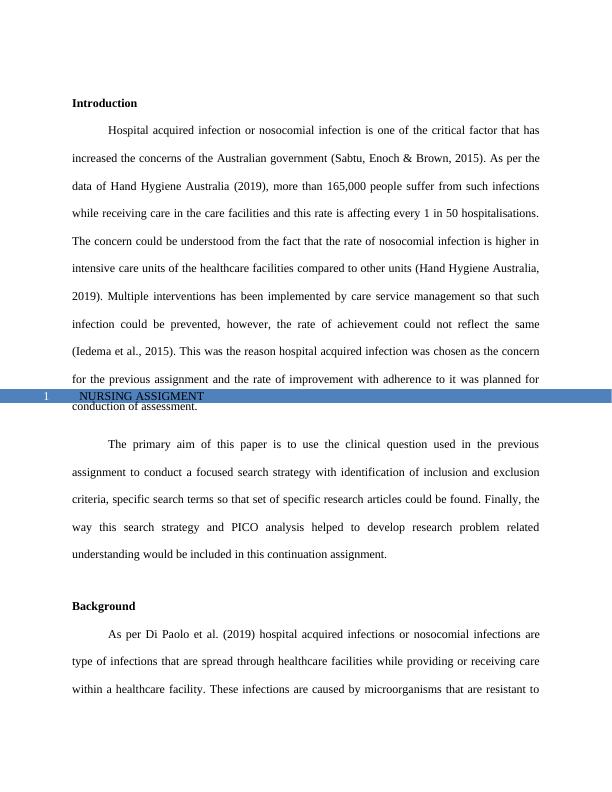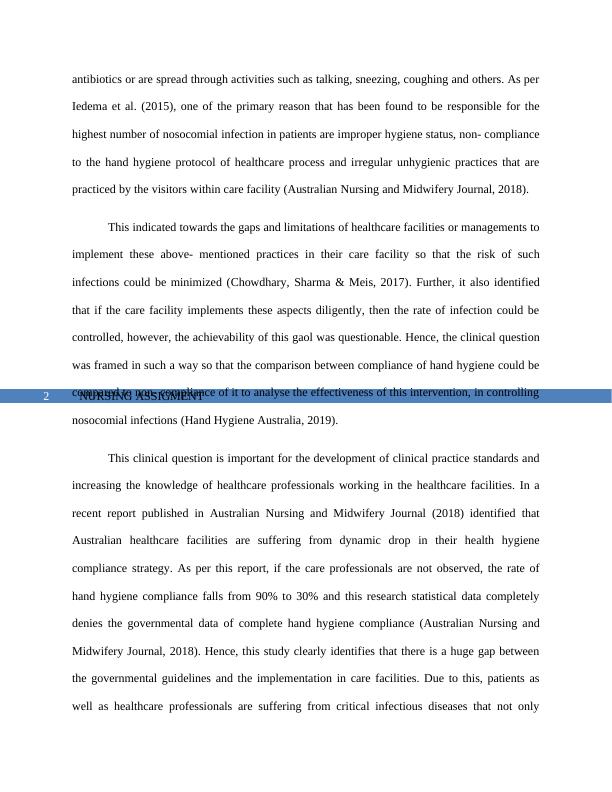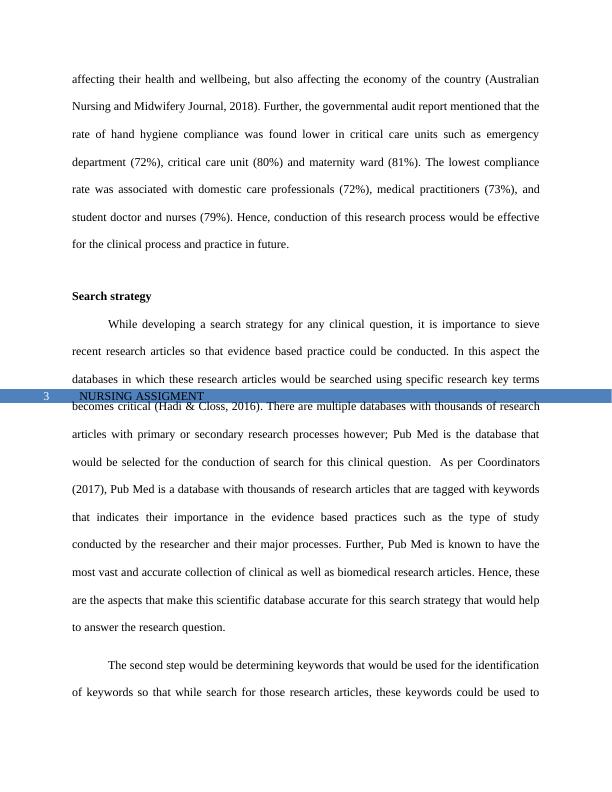Hand Hygiene Compliance and Nosocomial Infection: A Focused Search Strategy
Develop and submit a search strategy to answer a clinical question, describe the search outcomes, and provide a list of references for the assignment.
14 Pages2637 Words245 Views
Added on 2022-10-04
About This Document
This paper discusses the importance of hand hygiene compliance in reducing nosocomial infections. A focused search strategy is used to identify relevant research articles. The paper also discusses the significance of the research process in developing evidence-based practices.
Hand Hygiene Compliance and Nosocomial Infection: A Focused Search Strategy
Develop and submit a search strategy to answer a clinical question, describe the search outcomes, and provide a list of references for the assignment.
Added on 2022-10-04
ShareRelated Documents
End of preview
Want to access all the pages? Upload your documents or become a member.
According to Miranda Novales
|5
|1204
|17
Systematic Review on the Importance of Hand Hygiene in Infection Control and Reduction of Nosocomial Infections
|20
|4673
|21
Formulating a Clinical Question on Hospital Acquired Infection
|7
|1270
|438
Nursing Research on Hand Hygiene Compliance and Nosocomial Infections
|8
|2166
|61
Nursing and Hand Hygiene Practice | Essay
|11
|2539
|42
Evidence-Based Nursing Practice
|13
|2759
|22




